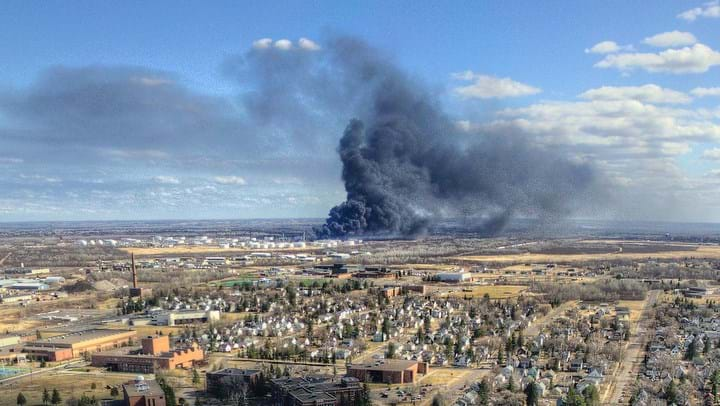Worn valve may have caused Husky refinery blast

THE US Chemical Safety Board (CSB) has said that a deteriorated valve may have caused the explosion at the Superior refinery, Wisconsin in the US on 26 April.
The incident caused 36 injuries and a large portion of the surrounding town was evacuated after debris ejected by the blast punctured a tank storing asphalt which subsequently leaked and caught fire.
In an investigative update released yesterday, the CSB pointed to a worn valve within the fluid catalytic cracking (FCC) unit as possibly initiating the accident. Slide valves within the FCC unit controlled the flow of catalyst between the reactor which contained flammable hydrocarbons and the regenerator which contained air.
The CSB says disassembly of the unit’s spent catalyst slide valve revealed internal wear that meant the valve could have been leaking when it was in the closed position.
Furthermore, during normal operations the catalyst was maintained at a level to create a barrier to prevent mixing of air and hydrocarbons. During shutdown, the catalyst was removed below the valve despite operator Husky’s shutdown procedure specifying that the unit “may have to have some catalysts in the reactor stripper to hold a seal across the spent [catalyst] slide valve”.
Investigators also found that instrumentation in the FCC was not configured to report negative differential pressure which would indicate conditions in the unit that would allow air to flow from the regenerator and through the spent catalyst slide valve and into the downstream equipment. It was instead configured to read zero.
“The differential pressure across the spent catalysts slide valve was zero for about 10% of the time between the beginning of the shutdown at 05:40 and the incident at about 10:00, indicating that air flow from the regenerator into the reactor and downstream equipment was possible,” the CSB update reads.
Speaking at press conference yesterday, Mark Wingard, lead investigator for the CSB, said the conditions allowed a flammable mixture to form.
"That flammable mixture then travelled away to a different part of the unit, found an ignition source and you have the explosion," he said, Wisconsin Public Radio reports. He noted that a degraded slide valve had failed during the 2015 explosion at ExxonMobil’s Torrance refinery in California. The CSB released a report last year outlining the importance of slide valves acting as barriers within FCC units.
"The Chemical Safety Board has found this problem at other refineries during their investigations," said Ginger Juel, co-founder of a local pressure group called the Twin Ports Action Alliance, that was formed in the wake of the Superior refinery blast.
"They make recommendations based on their investigations, and it seems like the Husky refinery maybe wasn’t familiar with previous investigations the CSB has done in order to prevent this disaster."
The Twin Ports Action Alliance is calling for Husky to stop using hydrogen fluoride at the refinery. The highly-toxic chemical is used as a catalysing agent in the refinery’s alkylation process but there are inherently safer alternatives.
While the hydrogen fluoride onsite was not involved in the initial incident, fears are that it could have been released in the resulting blasts. The CSB reports that debris from the explosion flew around 60 m. This punctured a steel storage tank which spilled around 15,000 bbl of hot asphalt which caught fire and sent thick flumes of smoke over the surrounding town.
Husky has said it will be looking at a number of options for reconfiguring the refinery. The CSB’s interim executive Kristen Kulinowski has noted that the agency may look into the hydrofluoric acid unit, but it is too premature to confirm at the moment.
"It's within our purview to look at that and we will be looking at the debris that was strewn across the site and determining whether there were additional potential hazards that resulted from that."
Recent Editions
Catch up on the latest news, views and jobs from The Chemical Engineer. Below are the four latest issues. View a wider selection of the archive from within the Magazine section of this site.




